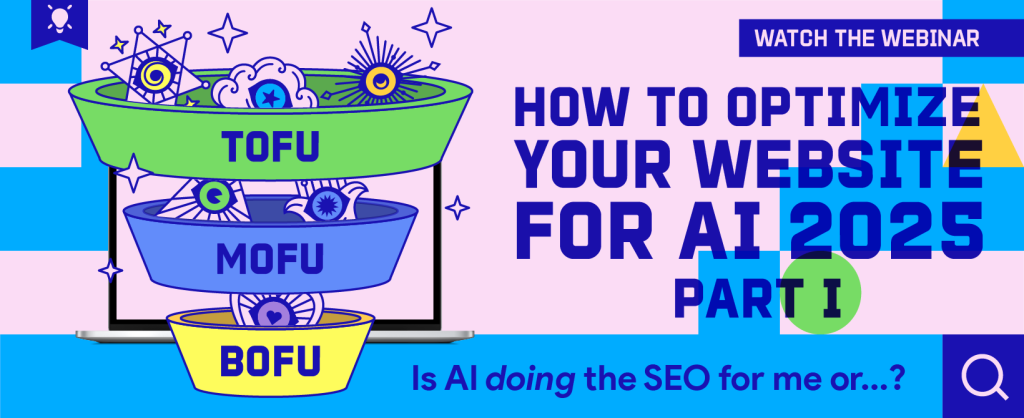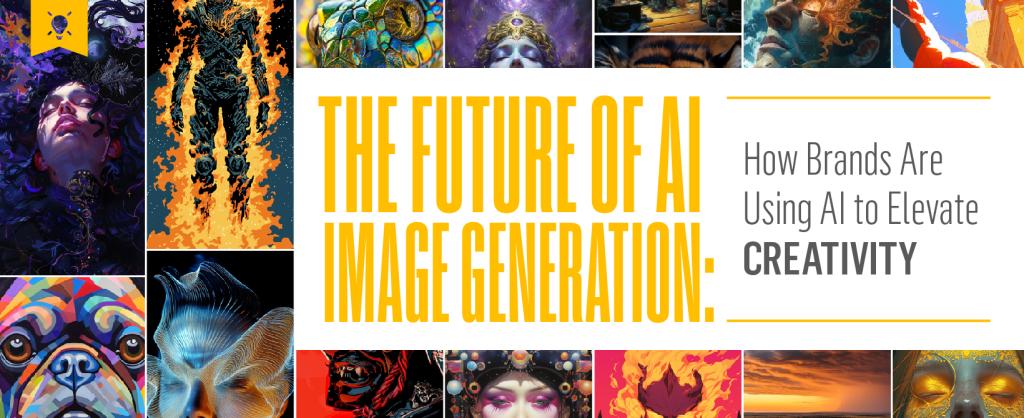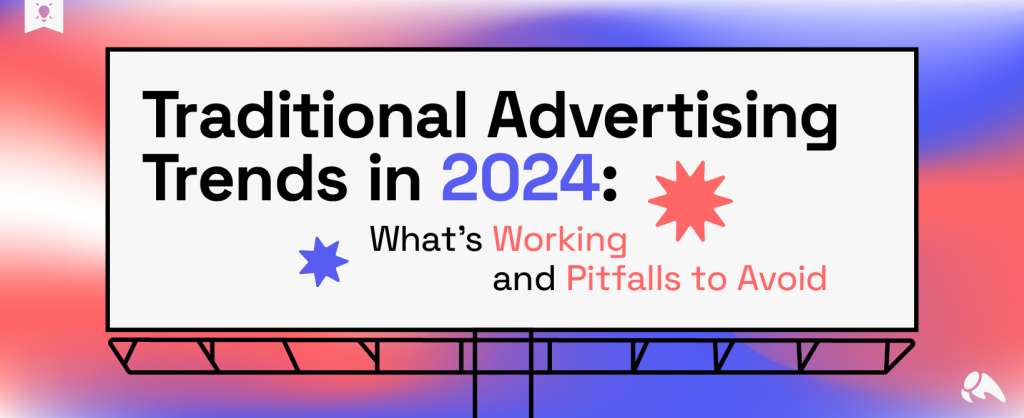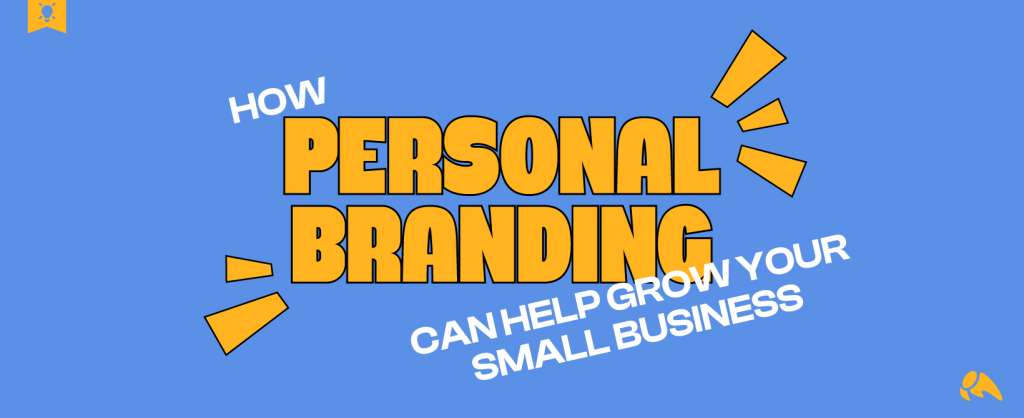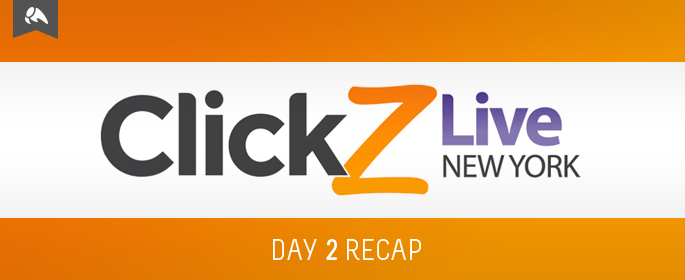
Day 2 of ClickZ Live New York was tremendous, kicked off by critical online reputation management lessons from Andy Beal (you can catch our recap of Andy’s morning keynote here).
What happened next? We caught the following sessions.
Marty Weintraub’s “Using Psychographic Distribution to Dominate Audience Targeting, Customer Acquisition (& SEO)
Psychographic. Who knows what that means? Marty Weintraub, founder and evangelist for aimClear® promises you’ll understand by the end of his session.
Marty’s opinion on Facebook? The company is dumbing itself down so everyone can figure out how to use its advertising options. It’s also telling us that our content isn’t important – at least, not enough to have any organic reach. In Marty’s opinion, Facebook has basically made organic-only Facebook strategies pointless.
And that’s bad news.
The good news… if you have a little money? Then you can do all the same organic things you did before – as if it was organic – and it will still look organic.
Now, psychographics – Marty’s talking about Affinities. Interests. Proclivities. Biases. Predispositions. Ages. Medical conditions. Attractions. Economic statuses. Relationships. Empathies. Tastes. Loyalties.
Etc. The point?
We’re past the keyword. We can get to the heart of who the person is now.
We can look up, “Home owners + Home improvement store shoppers + $125k income + woodworking affinity.” That’s a pretty dead-on segment if that happens to describe your target customer.
If you’re running Facebook ads, you must make sure you’re using Power Editor. If you don’t, you’re missing most of what you need – you’re missing radical information that will change how you approach your campaigns. Break your targeting down to granularities from job roles and industries to languages spoken and what people like.
Facebook’s category expansions weren’t messing around. Looking to attract business for your travel-related brand? You can find people who are currently traveling, or travel by buses, or want to travel to Orlando someday. You can identify people who returned from their trip one or two weeks ago! How specific is that?!
Targeting is Internet-wide, including Facebook.
We’re not just doing this targeting on Facebook. This kind of information is available to help with all of your online campaigns. Not sure how to find it? Marty recommends Bluekai, whose little blue book can inform you about many top data sources and how often they refresh their data. It’s an extremely valuable resource.
Marty stressed that you have to understand the value of data. You can’t fall behind in figuring out how to use it to your advantage. You can identify when individuals are in significant life transitions or hitting significant milestones. Think of all the life changes (and new decisions) that have to be made when you get a new job or lose a job. Buy a house or sell a house. Get married. Get divorced. Have a baby. Deal with the death of a family member.
You can set up a campaign to retarget to everyone that comes through your website. Or you can retarget to everyone but filter out people with bad credit. Or target only people who have five million dollar houses and tend to buy premium sporting goods. If you sell tires, don’t target people who have brand new cars. Getting the idea?
So… Why do we do content marketing? We want traffic. We want eyes on our site. We want conversion. “Selling is the best branding.”
Yes, we need links, and we need social signals. If you have a product that you can’t just sell immediately, links and shares are a way to get people to the top of the funnel. But if you’re targeting well, you introduce people deeper in the funnel.
Why else do we do content? “Content is about sales, seo and friendship.” We understand social signals, conversions and links. We get SEO, public relations and community building.
But right now, social networks and search engines are cutting off free search traffic options (Marty – “2013 was a really bad year for organic social media marketers”). They’ve figured out how to monetize our content, making all our tricks to drive organic traffic less successful. That’s what led us to search PPC – it’s what’s getting brands above the fold. It’s what is driving traffic. According to Marty, there’s no free search distribution anymore. Nobody’s really seeing your posts – it doesn’t matter if you have 7 million Facebook friends.
“Search PPC is to SEO as Social PPC is to content marketing. Social media without advertising just doesn’t work.”
But you shouldn’t spend all your money without targeting. If you tune content and drive someone into social from a very focused place, their actions will extend to external behaviors and actions. And that’s what you want, because that is what matters. “You can bullshit reach, but you can’t bullshit reaction.”
Other takeaways from Marty –
- He isn’t interested in tweeting the URL for the blog post – he’s tweeting the URL for the G+ detail page about the blog post. He’s finding the value in those social signals important and something we need to focus on more.
- When you’re creating your editorial calendar, plan your social promotion plan. Outline your preset marketing buckets and when you’re targeting them – amplify on a schedule.
- You can invest all you want in your content, but you need to put a promotion budget – even $300 – behind it. Promote to extremely targeted people, and you’ll see your reach and conversion rates soar. It’s not about promoting to mass audiences, it’s about promoting to the right audiences.
Everyone at the table – from SEO and social to PPC and PR – needs to understand the direction the online marketing landscape is moving. You’ve got to understand, and use, psychographics to improve your campaigns.
Cracking the Inbound Marketing Code: From Traffic, to Leads, to Revenue
Everyone is realizing the sales funnel is changing. Moderated by Mel Carson, this session focused on how to use online behaviors to improve your inbound marketing campaigns.
Adriel Sanchez, VP, Demand Generation at SAP, began by walking us through ten tips his team has learned with its inbound marketing work.
#1. Get your story straight. He wishes they’d have done that before they started their inbound marketing program. When you’re trying to get people to change the way they’re doing things, you have to get your company’s story – and how you describe your value – straight.
#2. Directly attributable opportunities and revenue are just one contribution of Inbound.
#3. Inbound is a result of good pull marketing. Pay attention. Take an active role in influencing conversations out there so that you can steer them toward your business priorities.
#4.Don’t get caught in the counting trap. Trying to count everything happening out there with inbound won’t set you up for success. We don’t have to count everything that’s happening. The reality is that you’re only going to see maybe 20% of the interactions.
Not everything that counts can be counted, and not everything that can be counted counts.
#5. B2B does not equal B to boring. (If you think this way – change that mindset now).
#6. No inbound inquiry left behind. You might prioritize your strongest sources, but take a look at all the sources providing leads. This will help you expose what changes and improvements you can make to your campaign.
#7. Pre-qualify Inbound traffic before routing to Sales. Don’t waste your Sales team’s time.
#8. Automate as much filtering as possible. There are plenty of tools to help you do this – save your company the wasted time of following up on the wrong leads.
#9. Ensure sales ‘motion’ alignment. Make sure everyone is on the same page. If your leads aren’t qualified, scale back to figure out how to get leads that are worth the time of your Sales team to pursue.
#10. Social media is the next big inbound channel.We talk about this a lot – and it’s only getting busier.
After Adriel left, we were wowed with some stats on Twitter from Sebastian Turner, from Twitter’s own B2B revenue team.
Like…
- Twitter has over 240 million actively monthly users.
- Twitter was created as a mobile platform. Though Twitter.com web interface exists, fundamentally, it remains a mobile platform. 76% of Twitter users are on mobile.
- It’s a live medium. Over 50% rely on Twitter to give them the latest news faster than any other source.
- There are ONE BILLION TWEETS shared every two days.
Oh, and the average person unlocks their phone 110 times each day. Wow.
According to Sebastian, Internet usage has nearly doubled over the last three years – mostly from mobile. You have to make sure that inbound content is mobile optimized.
Just like Marty, Sebastian wants marketers using Twitter to understand their audiences better. Get to know what they’re researching on Twitter and off. Get beyond demographic facts like how old they are – know what they’re actually interested in and what motivates them. Twitter is making that possible more and more.
Sebastian warns against muddying your message. When it comes to creative, what is your key goal? Clear the noise. Don’t put too many @ mentions, and don’t use too many hashtags. Don’t just share your post with a picture of your brand logo – put a more engaging picture of what you’re promoting.
Finally, choose the right conversion tracking method for your objectives.
- Post-engagement: Expand, retweet, favorite, follow, reply, click, etc
- Post-view: Tweet impression
Twitter can now track the whole story – finding who favorited Tweets and came back. Where they first saw material, when they clicked and what they consumed. Forget landing pages – submit forms within Twitter. It’s getting clearer and clearer. Twitter is still relatively new – advertising is only two years old – but we’re getting closer to having all the tools to track the entire marketing process, from impression to conversion.
Hand in Hand: Combining Social and Content to Earn Visibility and $
Final session before the afternoon keynote. Ryan Jones is moderating, and Lisa Barone and Erin Everhart are tackling social and content – most importantly, understanding your audience to write the correct content.
Lisa outlines the approach to content strategy used at Overit.
“No longer is my mother creating a list of questions and bringing them to a salesperson – now she’s doing that research on her own before she even interacts with your brand.”
So, how do you adapt to this changing buying cycle? She breaks it out into five steps:
#1. Determine goals and resources.
Content powers search, sharing, the buyer lifecycle (consumers are looking for different content at different stages) and brand visibility.
But there is a lot of bad content out there.

How do you stand out?
You want to create content that builds brand awareness. That’s where it begins for a lot of us. We’re trying to get our voice heard in the market. We’re increasing top of mind. It’s that slow-moving attention strategy. We’re looking to achieve:
- Brand awareness
- Lead nurturing
- Sales nurturing
- Customer service
- Customer retention
- Visibility
[Check out Lisa’s Search Engine Watch post on 6 Objectives When Creating New Content Assets just published this morning!]
Knowing that customers are reaching out later in the buying process, Lisa says we need to create content that is going to establish proof points or act as case studies. Provide content for customer service – anticipate a problem and provide an answer before it’s even an issue.
And spur attention. We know that it’s cheaper to keep a current customer than it is to find a new one. Turn your customers into evangelists. Increase visibility – not just general awareness, but leadership.

In terms of resources, B2B content marketing say their biggest challenge with content is a lack of time and being able to produce enough [source]. So, how is content going to work? Do you have the writers? Do you have designers? Do you have staff to help promote that content? Who’s responsible for content? If no one’s responsible, it’s not going anywhere.
#2. Get to know your audience.
Sounds simple, but if you’re making assumptions, you’re probably wrong. For content to be a success, your audience must give a damn. Lisa goes over the following ways she begins getting to know her audience:
- Analyzing analytics. Lisa starts there not because she wants specific numbers or because traffic is a great benchmark (it’s not) – she’s looking for patterns. What content to people love? What should we stop producing?
- Mining social conversations. She doesn’t call it stalking, but… social media gives people great opportunities to observe customers in their natural habitats. Lisa recommends Buzzsumo, Google Alerts, Social Mention, Advanced Twitter Search and Topsy as some of her top tools.
- Meeting your neighbors. Seek out those competitors and see who’s talking about them and what they’re talking about. What are their failures, and what are your opportunities?
- Surveying your existing audience. When you’re already stalking their social accounts and web use patterns, it’s only right that you actually talk to them, too. Learn from them. You’ll going to learn more from how you can improve and how you can make more money from the people who don’t like you than from the ones who already do. Ask:
How did you discover a need for this product?
What research did you go do?
How quickly did you go from need to purchase?
What was that process like?
What questions did you have post-purchase?
How did you attempt to answer them?
- Identifying key customers. Encourage them to become brand advocates.
#3. Find your stories.
Start taking the information you’re finding online and use the patterns you’re finding to create personas. How does each person that you’re going after find their way through the buying cycle? What’s the problem they’re experiencing? What were they looking for? Why are they going to choose you?
Understanding your customers is only half the battle. Clearly identify and communicate your story. Identify your core values, your USP, your company mission, your brand promise, your key messages and how you live them.
#4. Audit yourself… and others.
Look at how you’re performing and then do the same for your competitors. Lisa recommends Screaming Frog for running site crawls and Open Site Explorer for performance metrics.
#5. Create your calendar.
An editorial calendar is like a roadmap for content creation, showing you what kind of content to create, what topics to cover, which personas to target, and how often to publish to best support your marketing. Creating a good mix of content types, topics and personas makes sure you’re covering your various audiences.
Get everyone in the room. Know how SEO, PR, PPC, Social, Motion and going to complement each other’s efforts.
When planning your calendar, build campaigns, not content. Don’t write a blog post if you don’t know where it fits.
Now, getting back to those audience personas…
Erin Everhart, director of digital marketing at 352 Inc., is tired of hearing “content is king.” We’ve heard it so much it means nothing now.
Erin stresses that if your content has no strategy – if you’re building content for links rather than people – that’s a serious problem. So start by understanding who your buyers are.
Remember: Buyers and users are two different audiences. A buyer buys, a user uses. When you think of parents and college students, that could get messy if you mix up your messaging. Understand your buyers first – they’re the ones paying your bills.
Erin recommends interviewing people in your target audience. You’ll start noticing similar things when you have multiple interviews – these answers will begin to tie together to become your buyer personas. Ask questions like:
- When did you know you needed this product?
- Where and how did you shop?
- What was your timeline?
- What things were you looking for in this product?
- What were the most important attributes?
- How did you decide to buy?
- What did you do after buying?
Pay attention to the actual words people are using. Those become your keywords – it’s the purest keyword research you can do.
Once you have these buyer persons, then map it out where in the funnel they go.
You have your strategy for buyer personas – so what about the content?
Here’s a secret: “You don’t have to create a lot of content.” As SEOS, we had a misconception for a long time that you had to create content for the entire world. But that’s not a strategy and that’s not what people actually want to read. Effective content marketing is using the content you already have in multiple ways.
Your content’s life shouldn’t end at a blog post. If it does, you’re not leveraging your content to the best of your ability.
Let’s say you take a blog post and want to repurpose it. Break it down into bite-size pieces that are easily digestible.
Or, expand it out into a whitepaper or ebook.
Or, turn it into a webinar.
Not everyone is going to look at your content in the exact same way.
Even better? Use a Google Hangout to speak directly with your audience.
No one wants to hear how great you are. Promote your content, not your service.
Erin reminds us that most of the time, when people come to your site from a PPC campaign, they’re still feeling you out –personalize that experience. Erin is more likely to open emails that are personalize for her.
Then, make your content available everywhere. Erin highly recommends responsive design. People are getting our content from dozens of different devices and screen sizes.
What about reporting?
We have the tools available to us to better report on how content is working for our clients. Who remembers ranking reports? Those don’t work anymore.
And traffic isn’t our best traffic. Those are weak metrics. They don’t tell us anything. These people might be window shoppers – they’re not doing anything for your business.
Clients aren’t going to take that anymore. Anyone can drive traffic. It’s not hard. And anyone can manipulate traffic.
You have to track everything you can. You have to put URL trackers on every link you put out – you know exactly what ad people clicked on.
Real data comes from your marketing automation platform. Get idea what people are looking at – how often they visit, what pages. Are they in my audience? Start understanding who is consuming your content – if your contact form is the only way to capture an e-mail address, you’re drying up your lead funnel.
Erin says the beauty is in the details. Reports can show the name of the person who filled out her form, what social message they read, down to the exact tweet they read, and every touch after that.
Where do you start? Erin says start with you. Don’t drive traffic to a website that is never going to convert.
More to come from Day 2 and Day 3 of ClickZ Live New York, including Day 2’s afternoon keynote!
